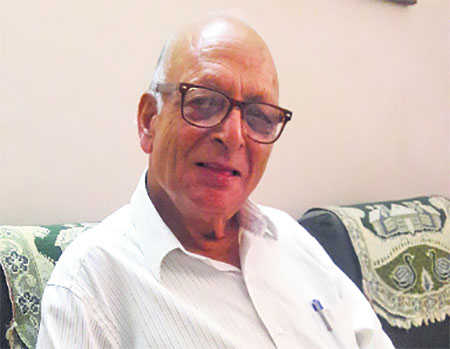Nabha House hosted KU classes early on
Vishal Joshi
Not many people know that the heritage buildings of Nabha House and Gita Bhawan in Kurukshetra were used as classrooms and office, respectively, by Kurukshetra University (KU) during its initial days.
Old-timers recall that students of MA (Sanskrit) used to assemble at Nabha House, a signature of erstwhile royal grandeur, for regular classes.
JP Agarwal, a retired Controller of Examination from the KU, says classes were held in the palatial royal building from 1957 to 59 and later it was used as residences of university employees.
“The joint Punjab Government then had acquired 400 acres for the KU and the institute was established in 1956. As the university compound was yet to be developed, the Kurukshetra Restoration Society, a Punjab Government body mandated to manage various public places in the holy city, agreed to allow Nabha House to be used for holding classes by the university and Gita Bhawan as its office,” says Agarwal.
According to the Kurukshetra district gazette, “The Kurukshetra Restoration Society built Gita Bhawan in 1921-22 at a cost of several lakh of rupees”. It is now managed by the erstwhile royal family of Rewa in Madhya Pradesh.
The Archaeological Survey of India (ASI) is conserving Nabha House located opposite the Sannehit Sarovar. However, the heritage complex does not provide any information to visitors about the preserved site and its association with the KU or the Kurukshetra Restoration Society.
Agarwal had joined the KU on August 1, 1960, and served as secretary to 13 Vice-Chancellors. He says the authorities should document various historical aspects of the university and the stories of its growth. Initially, the KU offered the postgraduate degree only in Sanskrit and regular courses were started after 1960s when it started getting its own infrastructure, he adds.
Agarwal says Gita Bhawan, opposite the office of the Kurukshetra Development Board, housed the administrative offices of the university.
“The then Vice-Chancellor of Panjab University, Prof AC Joshi, was given the additional charge of the KU and his office was located on the first floor of Gita Bhawan,” says Agarwal, an octogenarian.
“Not many people of my age are left who had seen the development of the holy city and the KU in the last six decades. The KU and the ASI should collaborate and mention the importance of these monuments with respect to the growth of the oldest university of Haryana,” he adds.
Agarwal recalls the first fulltime KU Vice-Chancellor, Hardwari Lal, managed to get the help of the Indian Army in levelling the uneven land of the university.
“The then Chief Minister of Punjab, Partap Singh Kairon, had ordered the acquisition of 400 acres for the KU. Noted historian Romila Thapar was a faculty member at the university and her uncle General PN Thapar was the Chief of the Indian Army. Hardwari Lal and Romila managed to convince General Thapar for getting assistance from the Army. General Thapar issued orders for deputing an Army unit to level the land as part of an exercise,” recalls Agarwal, who had worked as personal assistant (PA) to Hardwari Lal.










